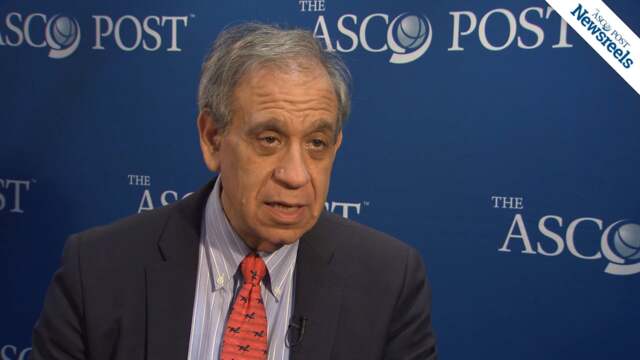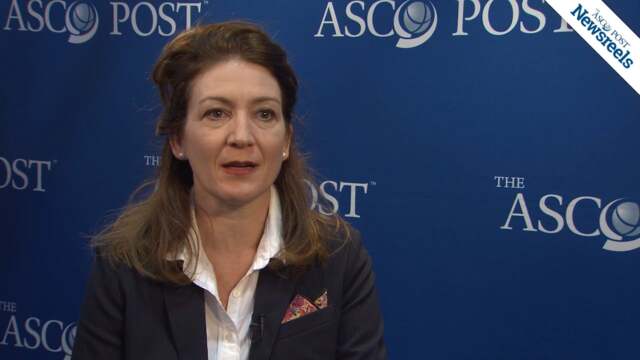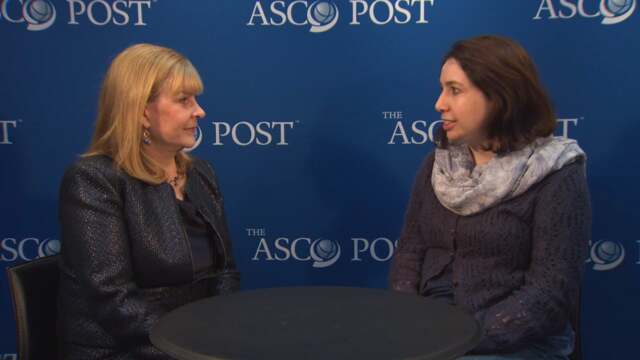Julie Vose, MD, MBA, and Anjali Advani, MD, on AML: Results of Two Trials on Vadastuximab Talirine
2016 ASH Annual Meeting & Exposition
Julie Vose, MD, MBA, of the University of Nebraska Medical Center, and Anjali Advani, MD, of the Cleveland Clinic, discuss study findings on vadastuximab talirine as monotherapy and, in another trial, vadastuximab talirine plus hypomethylating agents in older patients with AML (Abstracts 590, 591).
Andrew D. Zelenetz, MD, of the Memorial Sloan Kettering Cancer Center, discusses novel treatments for chronic lymphocytic leukemia, touching specifically on the Gilead 115 trial.
Joshua Brody, MD, of the Icahn School of Medicine at Mount Sinai, summarizes important data on passive and active immunotherapy (Abstracts 1213, 1214, 1215, 1216, 1217, 1218).
Stephen M. Ansell, MD, PhD, of the Mayo Clinic, discusses phase I study findings on nivolumab in combination with ipilimumab for relapsed or refractory disease (Abstract 183).
Catherine Thieblemont, MD, PhD, of Hôpital Saint-Louis and INSERM, discusses in French phase III trial findings on lenalidomide maintenance in elderly patients with DLBCL treated with R-CHOP in the first-line setting (Abstract 471).
Julie Vose, MD, MBA, of the University of Nebraska Medical Center, and Mhairi Copland, MB, ChB, PhD, of the Paul O’Gorman Leukaemia Research Centre at the University of Glasgow, discuss decreasing the dose of tyrosine kinase inhibitors in CML patients with stable molecular responses (Abstract 938).





